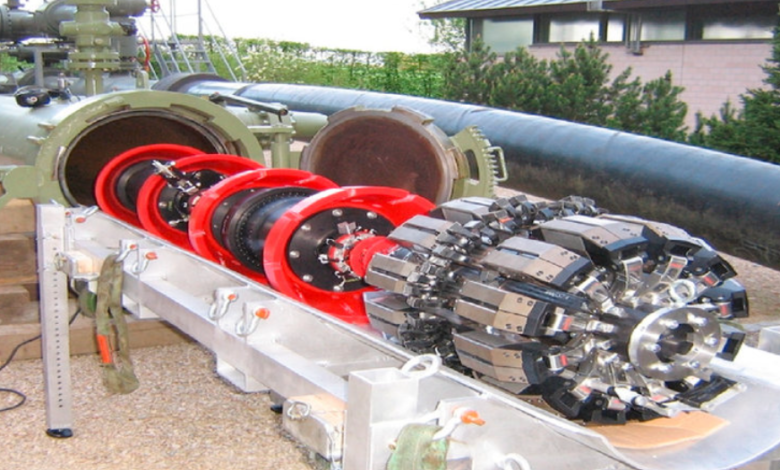How a Pipeline Pig Keeps Modern Infrastructure Running Smoothly

In today’s world, where oil, gas, water, and chemicals are transported across thousands of miles of underground or submerged pipelines, ensuring the safety and efficiency of these systems is vital. One often overlooked yet incredibly important tool that plays a significant role in this process is the pipeline pig. Despite its amusing name, a pipeline pig is a serious piece of equipment used extensively in industries reliant on pipelines. This article explores what a pipeline pig is, how it works, the different types available, and why it is indispensable in modern infrastructure.
What is a Pipeline Pig?
A pipeline pig is a device inserted into a pipeline to perform various maintenance operations without stopping the flow of the product in the pipeline. These operations can include cleaning, inspecting for corrosion or damage, separating different products in multiproduct pipelines, or simply clearing blockages.
The term “pig” is believed to have originated from early cleaning devices that made squealing sounds while traveling through pipelines, much like a pig. Today, pigs are more advanced, using cutting-edge technology and sensors to perform high-precision tasks.
See also: Protect Your Home with the Latest Alarm Installation and Security Technology
How Pipeline Pigs Work
The operation of a pipeline pig involves inserting it into the pipeline through a pig launcher—a specially designed section of the pipeline. Once inside, the pressure of the flowing product pushes the pig through the line. As it moves, it either scrapes, cleans, or gathers data from the interior of the pipeline.
At the receiving end, the pig is extracted from the line via a pig receiver. This whole process is conducted without halting the transport of the product, making it incredibly efficient and cost-effective.
Types of Pipeline Pigs
There are several types of pipeline pigs, each designed for a specific function:
1. Utility Pigs
These are typically used for cleaning and maintenance purposes. Utility pigs are equipped with brushes, cups, or blades that scrape off debris, scale, or wax buildup from the interior walls of the pipeline.
2. Gel Pigs
Composed of a gel-like material, these pigs are used in scenarios where a solid pig might get stuck. Gel pigs can be used for cleaning or even to displace other products in the pipeline.
3. Smart Pigs (Intelligent Pigs)
These are the high-tech version of the traditional pipeline pig. Smart pigs are equipped with sensors and data-logging systems that detect cracks, corrosion, or other structural defects in the pipeline. They are critical for integrity assessment and regulatory compliance.
4. Foam Pigs
Made of open-cell polyurethane foam, these lightweight pigs are used for drying, cleaning, or separating products. They are ideal for pipelines with complex shapes or varying diameters.
Applications of Pipeline Pigs
Pipeline pigs are used in multiple industries:
- Oil and Gas: To ensure the continuous and safe flow of petroleum and natural gas by preventing blockages and monitoring pipeline health.
- Water Utilities: For cleaning sediment or biological growth from potable and wastewater systems.
- Chemical Industries: To avoid cross-contamination in multiproduct pipelines.
- Food Processing: To push out residual products, thereby reducing waste and maintaining hygiene.
In all these industries, pipeline pigs contribute to operational efficiency, safety, and environmental protection.
Importance of Pigging in Pipeline Maintenance
Failing to maintain pipelines can lead to catastrophic consequences—leaks, explosions, environmental damage, and costly repairs. Regular pigging using a pipeline pig can prevent such failures by:
- Reducing Friction and Pressure Drops: Debris and buildup inside pipelines can reduce flow rates and increase pressure. Pigging restores optimal flow conditions.
- Preventing Corrosion: Water, oxygen, and corrosive materials can settle in pipelines. Cleaning pigs remove these agents before they can cause significant damage.
- Ensuring Product Quality: In multiproduct pipelines, pigs prevent product mixing and ensure purity.
- Enhancing Safety: By detecting anomalies early, smart pigs can prevent accidents and extend the life of infrastructure.
Environmental and Economic Benefits
Using a pipeline pig is not just about keeping operations smooth—it also provides environmental and economic advantages.
- Lower Maintenance Costs: Early detection of issues means less expensive repairs and fewer shutdowns.
- Reduced Product Loss: Pigs help recover residual products that would otherwise be wasted.
- Eco-Friendly Operations: By preventing leaks and spills, pigging supports environmental protection efforts.
In highly regulated sectors, these benefits also help companies meet strict environmental standards and avoid hefty fines.
Innovations in Pipeline Pig Technology
The traditional concept of a pipeline pig is evolving. With the advancement of digital technology, smart pigs now offer real-time data transmission, artificial intelligence-based anomaly detection, and integration with digital twins of pipeline networks.
These innovations allow for predictive maintenance, where operators can act before a failure occurs rather than after. This not only enhances safety but also makes operations more efficient.
Furthermore, smart pigs are becoming smaller, more adaptable, and able to handle pipelines with complex geometry—allowing even older or non-standard pipelines to benefit from the technology.
Challenges and Considerations
While pipeline pigs are immensely useful, they come with challenges:
- Compatibility: Not all pigs fit every pipeline. Customization may be needed for diameter, material, or flow conditions.
- Training and Expertise: Proper handling of pigging equipment requires skilled technicians.
- Initial Investment: Smart pigs and the associated data systems can be expensive, although the long-term savings often justify the cost.
Despite these challenges, the benefits clearly outweigh the drawbacks for most industrial applications.
Final Thoughts
The pipeline pig is a marvel of industrial engineering—simple in principle but critical in practice. Whether cleaning a pipe, inspecting it for corrosion, or recovering residual product, pigs silently and efficiently contribute to the integrity and performance of global infrastructure.
As industries grow more dependent on automated and remote operations, the role of pipeline pigs—especially intelligent ones—will only become more crucial. Investing in a good pigging program today means investing in safety, efficiency, and sustainability for years to come.
